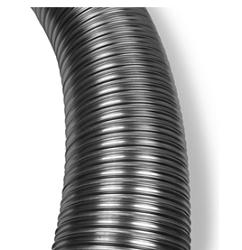Do you need to line your chimney?
Building regulations do not say that it is essential to fit a flexible flue liner. If a chimney can be proven to be in good order then you do not have to fit a flexible flue liner.
ChimFit say that to really try and put you off from choosing not to fit a flexible flue liner. A wood burning stove that is designed to work with a 6 inch flue will not perform as well if it were attached to a chimney of 11 inch diameter!
With a flexible flue liner fitted properly, insulated (if required) there should be no reason for a wood burning stove not to perform perfectly.
The only time ChimFit may not recommend chimney liners is if the chimney is new.
Possible problems of deciding not to fit a ChimFit recommended flexible flue liner

1. If the chimney is not in good working order then smoke and harmful Carbon Monoxide can travel into your home, this is very dangerous since Carbon monoxide can kill and does kill. Note: that’s why a Carbon monoxide detector in all bedrooms as well as the room with the stove is highly recommended by ChimFit.
2. Hot air and gas rises – cool it down and it will slow its assent, stop altogether or sink. Hot air or gas does not rise well in cold chimney spaces, especially where heat-stealing space or rough surfaces are in the chimney as they steal heat and slow down the deposits that travel with the gases. These deposits, when slowed, form tar and condensation both of which can damage the innards of the chimney. If smoke slows down too much then the flow of said smoke starts to build up and dams underneath, thus the stove begins to burn inefficiently.